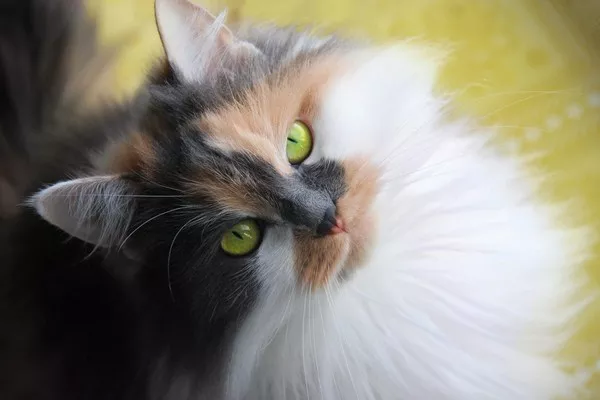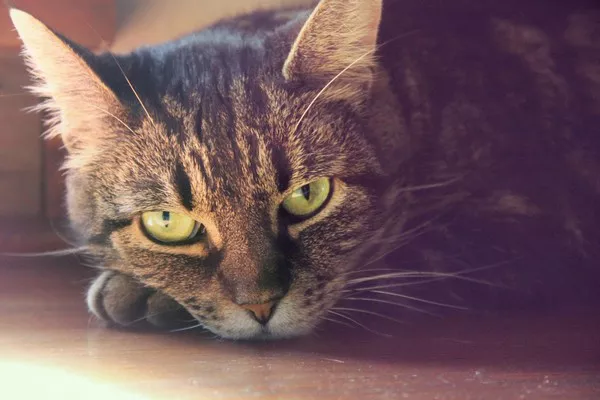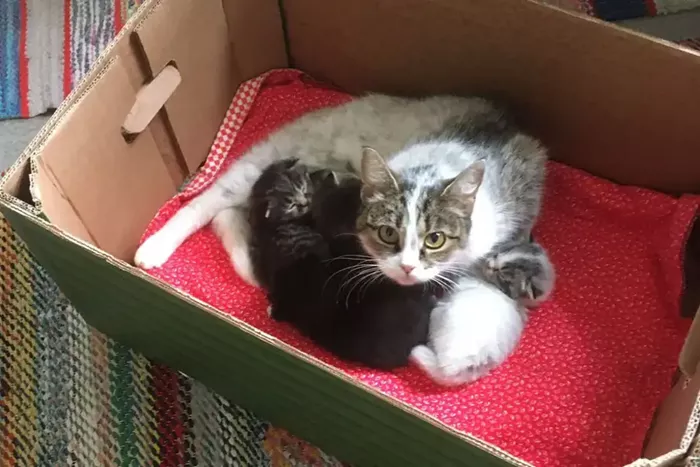Calico cats are known for their striking, tri-color coats and charming personalities. However, many cat owners and enthusiasts are curious about their behavior, particularly their biting tendencies and dietary needs. This article will delve into the fascinating world of calico cats, exploring their unique traits, reasons behind their biting behavior, and providing comprehensive guidance on their diet. By understanding these aspects, owners can ensure their calico cats lead healthy, happy lives.
What Makes Calico Cats Unique?
Genetics and Coat Color
Calico cats are not a breed but rather a color pattern seen in various breeds. Their coats are typically a mix of white, black, and orange. The calico coloration is due to a genetic phenomenon related to the X chromosome. Female cats have two X chromosomes (XX), while males have one X and one Y chromosome (XY). The genes responsible for the black and orange coloration are located on the X chromosome. Therefore, for a cat to be calico, it must have two X chromosomes, which is why almost all calico cats are female.
Temperament and Personality
Calico cats are often described as having spirited and lively personalities. They are known for being affectionate, independent, and sometimes a bit feisty. The uniqueness in their temperament can be partially attributed to their diverse genetic backgrounds, as the calico pattern appears in multiple breeds. Thus, their behavior can vary significantly, influenced by their specific breed traits.
Why Do Calico Cats Bite?
Common Reasons for Biting
Playfulness
One of the most common reasons calico cats bite is due to playfulness. Cats are natural hunters, and play-biting is a way for them to simulate hunting behavior. Young cats, in particular, may bite more frequently as they engage in play that mimics stalking and pouncing on prey.
Overstimulation
Cats can become overstimulated by too much petting or handling, leading to biting as a way to communicate that they need a break. Each cat has a different threshold for physical interaction, and understanding these limits is crucial for preventing bites.
Fear and Stress
When a cat feels threatened or stressed, it may resort to biting as a defensive mechanism. Changes in the environment, such as moving to a new home or the introduction of new pets or people, can cause anxiety, leading to aggressive behavior like biting.
Medical Issues
Pain or discomfort due to medical issues can also cause a cat to bite. If a typically gentle calico starts biting unexpectedly, it may be a sign of an underlying health problem that requires veterinary attention.
Addressing Biting Behavior
Proper Socialization
Early socialization is essential in teaching kittens acceptable behaviors. Gradually exposing them to different people, environments, and handling can help them become more comfortable and reduce the likelihood of biting.
Understanding Body Language
Learning to read a cat’s body language can prevent many biting incidents. Signs of agitation, such as flattened ears, dilated pupils, and twitching tails, indicate that the cat may be reaching its limit and needs some space.
Providing Appropriate Toys
Ensuring that a calico cat has plenty of appropriate toys can help redirect their biting behavior. Toys that mimic prey, such as feather wands and interactive puzzles, can provide an outlet for their hunting instincts.
Positive Reinforcement
Using positive reinforcement techniques, such as treats and praise, can encourage good behavior and discourage biting. Consistency is key in reinforcing these behaviors.
Dietary Needs of Calico Cats
Basic Nutritional Requirements
Protein and Taurine
Cats are obligate carnivores, meaning their diet must be rich in animal protein. Taurine, an essential amino acid found in meat, is crucial for their heart health, vision, and overall well-being.
Fats and Fatty Acids
Fats are an important energy source for cats and aid in the absorption of fat-soluble vitamins. Omega-3 and omega-6 fatty acids support skin health, a shiny coat, and reduce inflammation.
Vitamins and Minerals
Cats require a variety of vitamins and minerals, including Vitamin A, D, E, and B-complex vitamins. Minerals like calcium, phosphorus, and magnesium are essential for bone health and metabolic functions.
Choosing the Right Food
Commercial Cat Food
Most commercial cat foods are formulated to meet the nutritional needs of cats. It’s important to choose high-quality brands that list meat as the primary ingredient. Both dry and wet foods have their benefits, and a combination of both can provide balanced nutrition.
Homemade Diets
Some owners prefer preparing homemade diets for their cats. While this can be beneficial, it’s crucial to ensure the diet is nutritionally complete and balanced. Consulting with a veterinarian or a pet nutritionist can help create a suitable diet plan.
Special Dietary Needs
Calico cats, like any other cats, may have special dietary needs based on their age, health status, and any specific conditions. For instance, senior cats might require diets tailored to joint health and reduced calorie intake to prevent obesity.
Feeding Tips and Tricks
Portion Control
Proper portion control is vital to prevent obesity, which can lead to various health issues. Using a measuring cup or a kitchen scale can help ensure the correct amount of food is given at each meal.
Scheduled Feeding
Establishing a regular feeding schedule can help manage a cat’s weight and prevent overeating. Typically, feeding twice a day works well for most cats, but some may benefit from smaller, more frequent meals.
Hydration
Cats often do not drink enough water, so ensuring they stay hydrated is essential. Wet cat food can contribute to their daily water intake, and providing fresh, clean water at all times is a must. Some cats prefer running water, so investing in a cat water fountain can encourage them to drink more.
Health and Wellness
Regular Veterinary Check-ups
Regular veterinary check-ups are crucial for maintaining a calico cat’s health. Annual visits help monitor their weight, dental health, and overall well-being. Vaccinations, parasite control, and dental cleanings are part of a comprehensive health care plan.
Spaying and Neutering
Spaying or neutering is important not only for preventing unwanted litters but also for reducing the risk of certain health issues and behavioral problems. Spayed and neutered cats are less likely to roam, which reduces their risk of accidents and infectious diseases.
Grooming and Coat Care
Brushing
Regular brushing helps reduce shedding and prevents matting, especially in long-haired calico cats. It also provides an opportunity to check for skin issues or parasites.
Bathing
While cats generally do not need frequent baths, occasional bathing might be necessary, particularly if they get into something messy. Using a cat-specific shampoo and ensuring they are thoroughly dried afterward is important.
Dental Care
Dental health is often overlooked in cats but is essential for their overall health. Regular brushing with a cat-specific toothbrush and toothpaste, along with dental treats, can help maintain healthy teeth and gums.
Creating a Stimulating Environment
Enrichment Activities
Providing a stimulating environment is crucial for a calico cat’s mental and physical well-being. Interactive toys, puzzle feeders, and climbing structures can keep them engaged and active.
Safe Outdoor Experiences
If you choose to allow your calico cat outside, ensure their safety by supervising their time outdoors or using a secure outdoor enclosure. This allows them to enjoy fresh air and sunshine while staying protected from potential dangers.
Quality Time with Owners
Calico cats thrive on interaction with their owners. Spending quality time playing, cuddling, or simply sitting together can strengthen your bond and provide the social interaction they need.
Conclusion
Calico cats are delightful companions with their vibrant coats and lively personalities. Understanding their behavior, particularly their biting tendencies, and providing a balanced diet tailored to their needs are essential aspects of responsible cat ownership. By creating a stimulating environment, ensuring regular veterinary care, and paying attention to their health and wellness, owners can enjoy a fulfilling and loving relationship with their calico cats. Whether you are a seasoned cat owner or considering bringing a calico cat into your home, this comprehensive guide provides the knowledge needed to ensure they lead a happy and healthy life.























